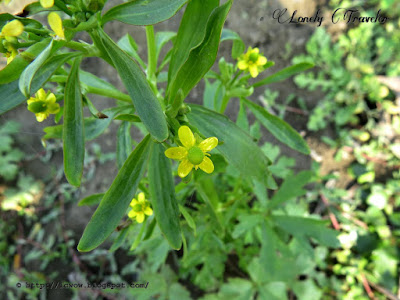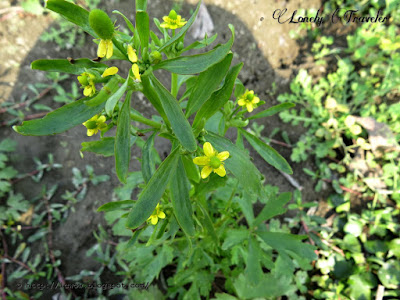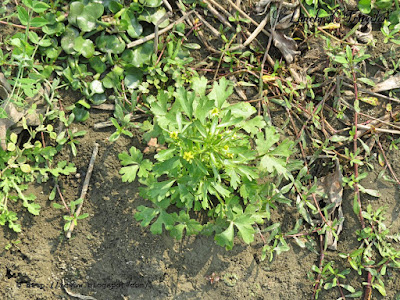| Common Name : | Cursed buttercup, Celery-leaved buttercup, etc. |
| Botanical Name : | Ranunculus sceleratus |
| Synonym : | Ranunculus umbellatus |
| Family : | Ranunculaceae (buttercup family) |
| Photo Taken : | Bangladesh |
Name of the plant is Cursed buttercup. Looking for an authentic Bangla name for this plant. It has few other common names such as Poisonous buttercup, Celery-leaved buttercup, Blister buttercup, Indian buttercup, etc. Botanical name of the plant is Ranunculus sceleratus. It belongs to the plant family Ranunculaceae. Not sure where the plant is native, but this plant is available in our country Bangladesh.
Cursed buttercup (Ranunculus sceleratus) is a succulent herbaceous plant that grows as a shape of an umbrella (more precisely like a christmas tree). This is an erect annual herb and can reach up to 20 inches in height. The leaf of the plant has similarity with the celery or coriander leafs (probably that's why species name sceleratus). Leafs are having long petiole. Plant has linear leaflike things which probably the sepals of the plant. This plant prefers to grow in wet soil, specially beside the river, pond or at paddy fields.
Flower of Cursed buttercup (Ranunculus sceleratus) is yellow colored with a green ovary at the middle. Flower has five elliptic shaped petals those form a star. The ovary of the flower later converts into fruit having cluster of seeds. As the plant is a small one, and the flowers are also tiny, that's why they are not that much showy.
The notorious prefixes in name of this buttercup flower have a reason. The plant is poisonous. Crushing or wrinkling the leaf and stem produce a sap (I believe contains acid) that causes blistering to human skin. This plant is probably the most toxic plant from all buttercups. These behaviors perfectly justify the prefixes Poisonous, Cursed, Blistering, etc in the name.
This will convert as a fruit.
The small plant on the wet soil that is beside a river.
Photos of Cursed buttercup (Ranunculus sceleratus) were taken from Munsiganj, Bangladesh. It was beside the river Dhaleswari during the month of January 2015.
This article has written by Lonely Traveler,
for the blog http://icflora.blogspot.com/







nice post
ReplyDelete